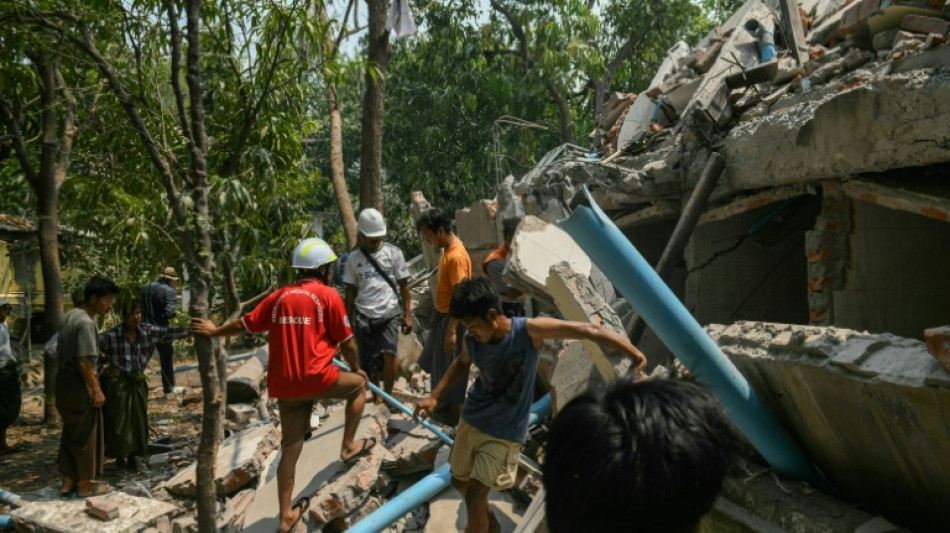
-
 No technical obstacles to new giant particle collider in Europe: CERN
No technical obstacles to new giant particle collider in Europe: CERN
-
Swing king Ashwani Kumar powers Mumbai to first IPL win of season

-
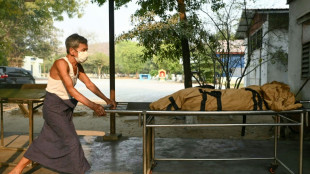 'Noble work' of Buddhist cremations after Myanmar quake
'Noble work' of Buddhist cremations after Myanmar quake
-
Myanmar to mark minute of silence as quake toll passes 2,000
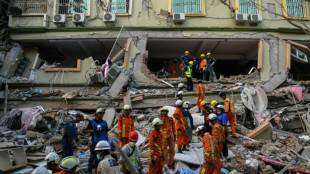
-
 Young Turkish protesters face rude awakening in police custody
Young Turkish protesters face rude awakening in police custody
-
Pentagon chief orders gender-neutral fitness standards for combat troops

-
 Michelin Guide unveils new stars for 68 restaurants in France
Michelin Guide unveils new stars for 68 restaurants in France
-
Trump confident in finding TikTok buyer before deadline

-
 Wrexham reap financial rewards of Hollywood tie-up
Wrexham reap financial rewards of Hollywood tie-up
-
Hamas issues call to arms against displacement as Israel orders new evacuations
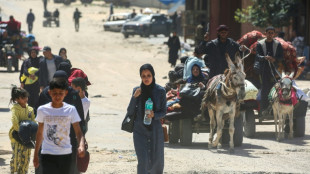
-
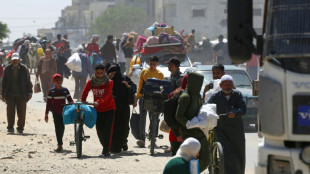 Gazans flee southern city of Rafah after Israel military orders evacuation
Gazans flee southern city of Rafah after Israel military orders evacuation
-
Canada candidates promise less reliance on US a month before vote

-
 Brathwaite quits as West Indies Test skipper, Hope takes white-ball charge
Brathwaite quits as West Indies Test skipper, Hope takes white-ball charge
-
'No excuses' for tired Forest against Man Utd, says Nuno

-
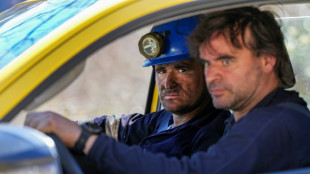 Spain coal mine blast kills five
Spain coal mine blast kills five
-
S&P 500 falls into correction as tariff fears rattle stock markets

-
 England Test captain Stokes to miss early county games in fitness battle
England Test captain Stokes to miss early county games in fitness battle
-
Macron vows to defend science as host of UN oceans summit

-
 Brain implant turns thoughts into speech in near real-time
Brain implant turns thoughts into speech in near real-time
-
Top aide to Israel's Netanyahu arrested in 'Qatargate' probe

-
 Slashed US funding threatens millions of children: charity chief
Slashed US funding threatens millions of children: charity chief
-
China property giant Vanke reports annual loss of $6.8 bn

-
 World economies brace for Trump tariffs ahead of deadline
World economies brace for Trump tariffs ahead of deadline
-
Myanmar declares week of mourning as quake toll passes 2,000
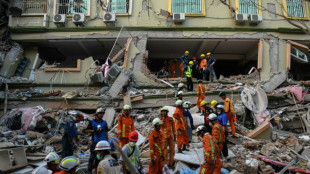
-
 Japan leads hefty global stock market losses on tariff fears
Japan leads hefty global stock market losses on tariff fears
-
Yes, oui, Cannes! Glamour name eyes place in French Cup final

-
 'Different energy' at Man Utd after mini-revival, says Amorim
'Different energy' at Man Utd after mini-revival, says Amorim
-
Fear of aftershocks in Myanmar forces patients into hospital car park
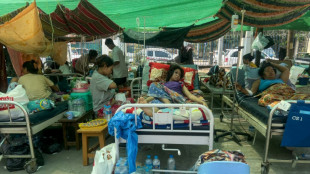
-
 Far-right leaders rally around France's Le Pen after election ban
Far-right leaders rally around France's Le Pen after election ban
-
Renault and Nissan shift gears on alliance

-
 Hard-hitting drama 'Adolescence' to be shown in UK schools
Hard-hitting drama 'Adolescence' to be shown in UK schools
-
Primark boss resigns after inappropriate behaviour allegation

-
 Myanmar declares week of mourning as quake toll passes 2,000, hopes fade for survivors
Myanmar declares week of mourning as quake toll passes 2,000, hopes fade for survivors
-
Mbappe can be Real Madrid 'legend' like Ronaldo: Ancelotti

-
 Saka 'ready to go' for Arsenal after long injury lay-off: Arteta
Saka 'ready to go' for Arsenal after long injury lay-off: Arteta
-
Aston Martin to sell stake in Formula One team

-
 Three talking points ahead of clay-court season
Three talking points ahead of clay-court season
-
French court hands Le Pen five-year election ban

-
 Probe accuses ex J-pop star Nakai of sexual assault
Probe accuses ex J-pop star Nakai of sexual assault
-
Japan leads hefty global stock market losses on tariff woes

-
 Saka 'ready to go' after long injury lay-off: Arteta
Saka 'ready to go' after long injury lay-off: Arteta
-
Ingebrigtsen Sr, on trial for abusing Olympic champion, says he was 'overly protective'

-
 Tourists and locals enjoy 'ephemeral' Tokyo cherry blossoms
Tourists and locals enjoy 'ephemeral' Tokyo cherry blossoms
-
Khamenei warns of 'strong' response if Iran attacked

-
 France fines Apple 150 million euros over privacy feature
France fines Apple 150 million euros over privacy feature
-
UK PM urges nations to smash migrant smuggling gangs 'once and for all'

-
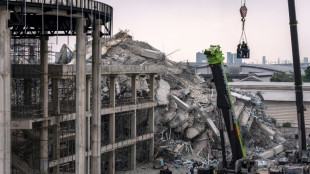 Thai authorities probe collapse at quake-hit construction site
Thai authorities probe collapse at quake-hit construction site
-
France's Le Pen convicted in fake jobs trial

-
 Chinese tech giant Huawei says profits fell 28% last year
Chinese tech giant Huawei says profits fell 28% last year
-
Trump says confident of TikTok deal before deadline

| RBGPF | 1.47% | 68 | $ | |
| CMSC | -0.37% | 22.38 | $ | |
| RYCEF | -2.8% | 9.64 | $ | |
| GSK | -0.51% | 38.545 | $ | |
| BTI | 1.85% | 41.275 | $ | |
| NGG | -0.12% | 65.49 | $ | |
| RELX | 0.28% | 50.3 | $ | |
| SCS | -0.73% | 11.02 | $ | |
| VOD | -0.8% | 9.375 | $ | |
| RIO | -1.87% | 59.91 | $ | |
| BP | -0.31% | 33.755 | $ | |
| AZN | -0.76% | 73.23 | $ | |
| JRI | 0.51% | 12.936 | $ | |
| BCE | 0.37% | 23.055 | $ | |
| BCC | 0.43% | 98.72 | $ | |
| CMSD | 0.26% | 22.77 | $ |

Scientists explain why Myanmar quake was so deadly
Experts say that the devastating earthquake in Myanmar on Friday was likely the strongest to hit the country in decades, with disaster modelling suggesting thousands could be dead.
Automatic assessments from the United States Geological Survey (USGS) said the shallow 7.7-magnitude quake northwest of the central Myanmar city of Sagaing triggered a red alert for shaking-related fatalities and economic losses.
"High casualties and extensive damage are probable and the disaster is likely widespread," it said, locating the epicentre near the central Myanmar city of Mandalay, home to more than a million people.
Myanmar's ruling junta said on Saturday morning that the number killed had passed 1,000, with more than 2,000 injured.
However, the USGS analysis said there was a 35 percent chance that possible fatalities could be in the range of 10,000-100,000 people.
The USGS offered a similar likelihood that the financial damage could total tens of thousands of millions of dollars, warning that it might exceed the GDP of Myanmar.
Weak infrastructure will complicate relief efforts in the isolated, military-ruled state, where rescue services and the healthcare system have already been ravaged by four years of civil war sparked by a military coup in 2021.
- Dangerous fault -
Bill McGuire, emeritus professor of geophysical and climate hazards at University College London (UCL), said it was "probably the biggest earthquake on the Myanmar mainland in three-quarters of a century".
A 6.7-magnitude aftershock struck minutes after the first and McGuire warned that "more can be expected".
Rebecca Bell, a tectonics expert at Imperial College London (ICL), suggested it was a side-to-side "strike-slip" of the Sagaing Fault.
This is where the Indian tectonic plate, to the west, meets the Sunda plate that forms much of Southeast Asia -- a fault similar in scale and movement to the San Andreas Fault in California.
"The Sagaing fault is very long, 1,200 kilometres (745 miles), and very straight," Bell said. "The straight nature means earthquakes can rupture over large areas -- and the larger the area of the fault that slips, the larger the earthquake."
Earthquakes in such cases can be "particularly destructive", Bell added, explaining that since the quake takes place at a shallow depth, its seismic energy has dissipated little by the time it reaches populated areas above.
That causes "a lot of shaking at the surface", Bell said.
- Building boom -
Myanmar has been hit by powerful quakes in the past.
There have been more than 14 earthquakes with a magnitude of 6 or above in the past century, including a magnitude 6.8 earthquake near Mandalay in 1956, said Brian Baptie, a seismologist with the British Geological Survey.
Ian Watkinson, from the department of earth sciences at Royal Holloway University of London, said what had changed in recent decades was the "boom in high-rise buildings constructed from reinforced concrete".
Myanmar has been riven by years of conflict and there is a low level of building design enforcement.
"Critically, during all previous magnitude 7 or larger earthquakes along the Sagaing Fault, Myanmar was relatively undeveloped, with mostly low-rise timber-framed buildings and brick-built religious monuments," Watkinson said.
"Today's earthquake is the first test of modern Myanmar's infrastructure against a large, shallow-focus earthquake close to its major cities."
Baptie said that at least 2.8 million people in Myanmar were in hard-hit areas where most lived in buildings "constructed from timber and unreinforced brick masonry" that are vulnerable to earthquake shaking.
"The usual mantra is that 'earthquakes don't kill people; collapsing infrastructure does'," said Ilan Kelman, an expert in disaster reduction at UCL.
"Governments are responsible for planning regulations and building codes. This disaster exposes what governments of Burma/Myanmar failed to do long before the earthquake, which would have saved lives during the shaking."
- Skyscraper checks -
Strong tremors also rocked neighbouring Thailand, where a 30-storey skyscraper under construction was reduced to a pile of dusty concrete, trapping workers in the debris.
Christian Malaga-Chuquitaype, from ICL's civil and environmental engineering department, said the nature of the ground in Bangkok contributed to the impact on the city, despite being some 1,000 kilometres (620 miles) from the epicentre in Myanmar.
"Even though Bangkok is far from active faults, its soft soil amplifies the shaking," he said. "This affects especially tall buildings during distant earthquakes."
Malaga-Chuquitaype said the construction techniques in Bangkok favouring "flat slabs" -- where floors are held only by columns without using strengthening beams, like a table supported only by legs -- were a "problematic design".
He said that initial video analysis of the collapsed tower block in Bangkok suggested this type of construction technique had been used.
Roberto Gentile, a catastrophe risk modelling expert from UCL, said the "dramatic collapse" of the Bangkok tower block meant that "other tall buildings in the city may require a thorough assessment".
Bangkok city authorities said they will deploy more than 100 engineers to inspect buildings for safety after receiving more than 2,000 reports of damage.
P.Silva--AMWN

